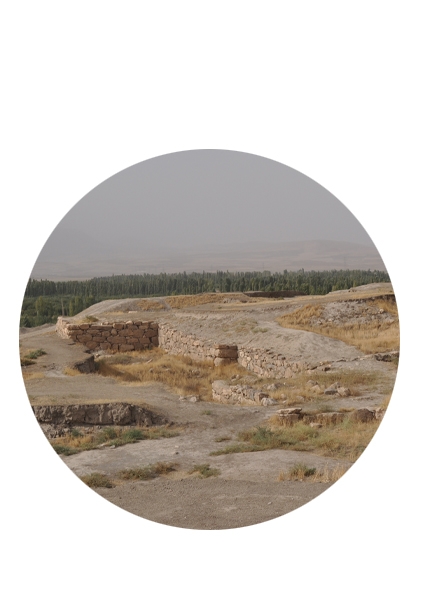Hasanlu is located in the Ushnu-Solduz Valley, just southwest of Urmiye Lake. It was built on a natural hill in the northwestern part of the valley that leads to northwestern Iran via the passage of Keliş through the Zağros. Between 1957 and 1977, archaeological studies were conducted under the direction of Robert H. Dyson on behalf of the University of Pennsylvania.
Iron
It is difficult to make stratigraphic and chronological distinction between V, reflecting Iron I period and IV, reflecting Iron II period in Hasanlu. There is a clear similarity between the ceramic groups of both layers. Examples of C14 taken from the IV layer IV Structure shows the starting dates of its structures as 1001 + -20, 993 and 1009 BC.
In this period, it is understood that people, especially in Hasanlu, prefer the settlements with defense system. Small-scale village-type settlement areas, which now reflect the old settlement order in Northwestern Iran, have been replaced by the castle type, and the need for defense. In this period in Hasanlu, bulwark with 11 tower is surrounded to the around of the settlement area. There are 35 m between the towers and each is about 10 square meters. It was determined that the only entrance was on the western slope and two protected roads came from the outer city. The buildings within the walls are two-storey, there is an entrance space with a small room at both ends and a columned reception hall surrounded by storage rooms.
The finds from the building reflect the end-use period. Assyrian copies and imported goods as well as finds reflecting local tradition were also found. There are typical 9th century cylindrical seals for the Assyrian material in Hasanlu IV. In addition, bronze animal-shaped furniture legs and a type of boiler handles were found in Gordion. The finds show that there was a strong Assyrian influence in the region during this period.
Contrary to the building level V in Hasanlu, there were found plenty of iron in the IV layer, ie a large amount during the Iron II period. Bronze daggers and knives, bronze needles, ax heads, metal vessels and pottery are indicated to be the products of the local tradition of the region except Assyrian influence.
End of the Iranian Iron II period, determining the end of Hasanlu IV has been solved to a large extent chronologically. Most of the Small finds found to be used before the demolition in the buildings were similar to the 9th century Assyrian examples. The ivory artifacts, which were understood to have been imported, were dated to the beginning of the 8th century BC. C14 samples taken from the settlement base, besides the typological evidence, show roughly 8 centuries BC. The collapse of this stratum is associated with the Urartian kings Isfini and the reign of Menua.
HASANLU

HASANLU





